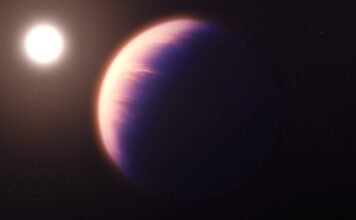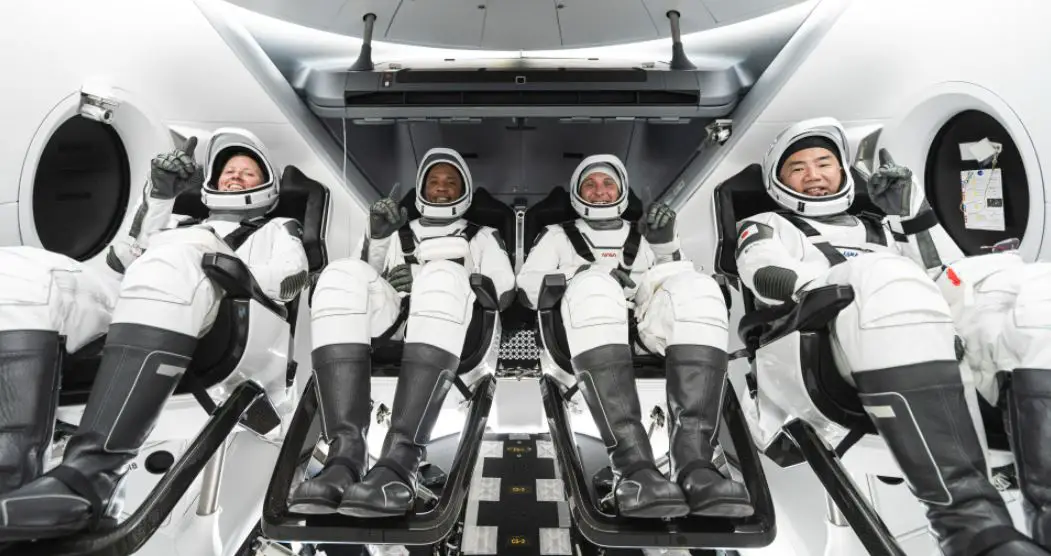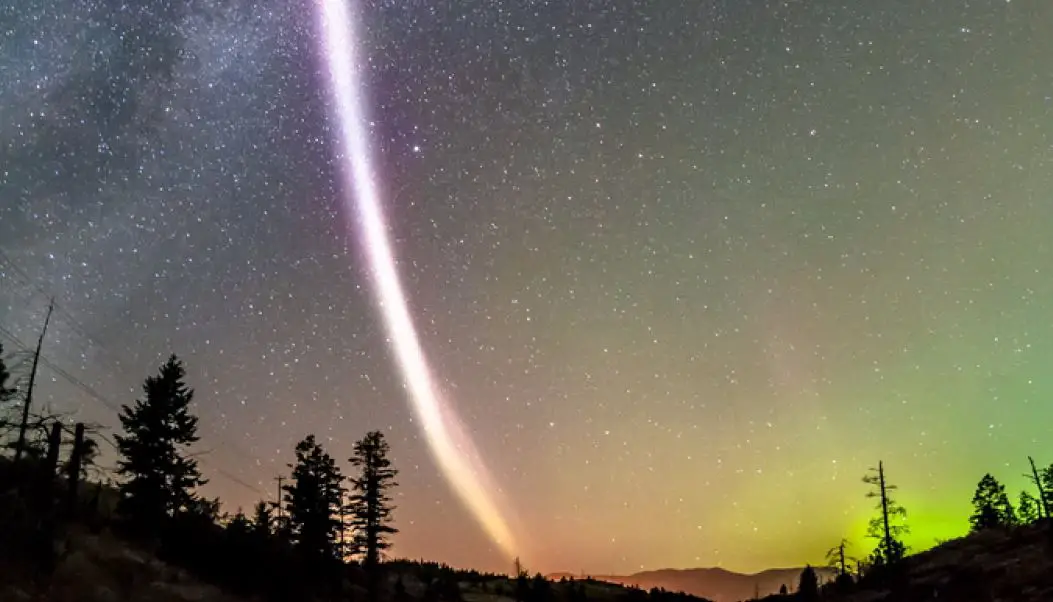One of the world’s most powerful telescopes ever constructed is one step closer to being launched into space, where scientists at NASA hope it will solve mysteries in the solar system by looking beyond distant worlds and stars to learn about the origins of our universe and much more.
The James Webb Space Telescope finished fueling up at the Guiana Space Center in Kourou, French Guiana, last week and now engineers are tasked with the Final Assembly Building, where the scope will be carefully placed atop its rocket.
According to NASA, the telescope will soar 1 million miles from Earth, with 12 rocket thrusters attached to it. The telescope is unique in design, attached to 18 gold-plated hexagonal mirrors that emulate a honeycomb and allow the scope to see infrared light with unprecedented resolution and sensitivity. Each mirror segment can unfold and adjust to shape after launch.
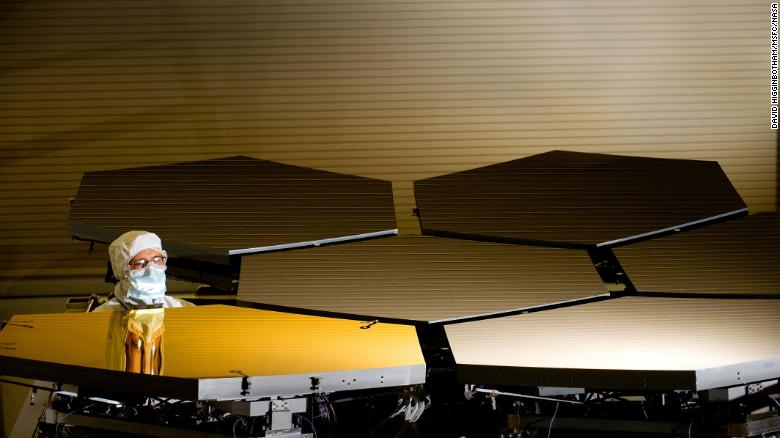
What Time Will the James Webb Telescope Launch?
The James Webb Space Telescope is finally on the launchpad. The space observatory, safely tucked inside an Ariane 5 rocket, is expected to launch on December 25. The launch window opens Christmas morning at 7:20 a.m. ET and closes at 7:52 a.m. ET. Live coverage of the launch will stream on NASA’s TV channel and website beginning Saturday at 6 a.m.The highly anticipated launch of the James Webb Space Telescope has been delayed multiple times.Ahead of a planned launch for December 24, news of adverse weather conditions came shortly after NASA shared that the Launch Readiness Review for the telescope was completed on Tuesday.
The new targeted launch date is December 25, as early as possible within the following launch window:
- Between 7:20 a.m. and 7:52 a.m. Washington
- Between 9:20 a.m. and 9:52 a.m. Kourou
- Between 12:20 p.m. and 12:52 p.m. Universal (UTC)
- Between 1:20 p.m. and 1:52 p.m. Paris
- Between 9:20 p.m. and 9:52 p.m. Tokyo
James Webb Space Telescope Launch — Official NASA Broadcast
“How did the early universe look like?”
With the launch of the James Webb Space Telescope, we might be getting closer to answering many questions. “What did the early universe look like?” is just one of them.
Webb will see what other telescopes could not
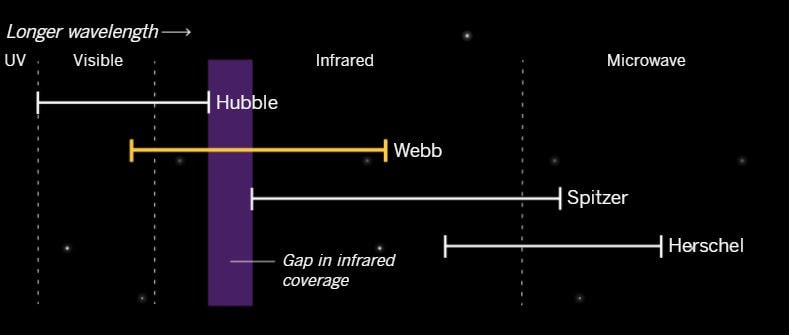
The key to Webb’s deep-space vision is its ability to sense infrared light.
As the universe expands, the light waves from the earliest stars and galaxies stretch out. By the time those waves reach us, they’re too long to be seen as visible light. Instead, they appear as infrared — a form of invisible energy we can detect only as heat.
Infrared waves readily pass through clouds made of gas and dust. By taking in infrared light, the telescope can essentially see through objects that would otherwise block its view, much the way X-rays are used to create images of the structures inside a human body.
Past telescopes have been able to capture infrared light, but only in a more limited range of wavelengths. Webb will fill a large gap by detecting light waves from the earliest stars and galaxies in the universe.
ORBITING A MILLION MILES AWAY
The heat of the sun can easily interfere with the Webb’s sensitive infrared detectors. That’s why it’s equipped with a shield to reflect the heat.
The Webb must also be positioned at a “Goldilocks” location for telescopes, almost 1 million miles from Earth — a spot that, gravitationally speaking, is not too far and not too close.
A SUPER-SIZE MIRROR
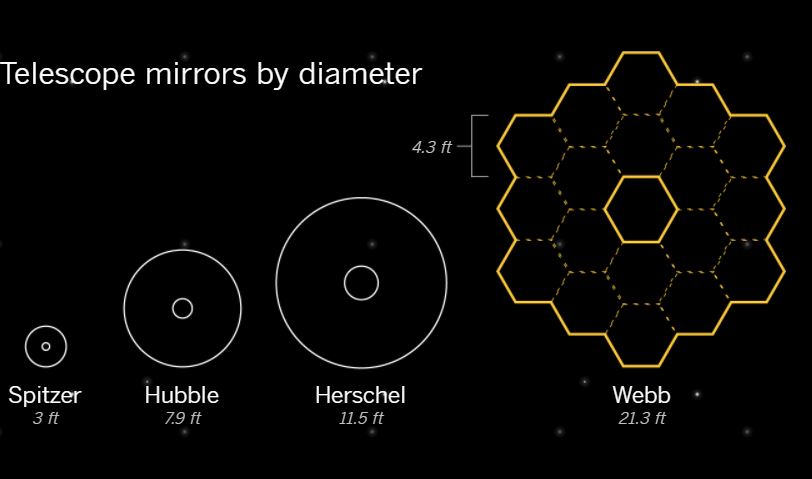
Thanks to Webb, scientists will be able to produce images at a higher resolution than was possible with any other infrared telescope before it. The key is Webb’s large mirror, whose 18 hexagonal pieces will help it absorb as much infrared light as possible.
Because infrared light has a wavelength 10 times as wide as visible light, the Webb needed a significantly larger mirror than the Hubble. The result was a gold-plated mirror that is 2.7 times larger than its predecessor.
What Happens After Launch of Webb Telescope?
Once the telescope launches, it will travel for about a month until it reaches an orbit about 1 million miles (1.6 million kilometers) away from Earth. Over the course of 29 days, Webb will unfold its mirrors and unfurl a protective sunshield. This process involves thousands of parts that must work perfectly in the right sequence.Fortunately, each step can be controlled from the ground in case there are issues.Then Webb will go through a period of setting up shop in space that lasts for six months, which involves cooling down the instruments, alignment and calibration. All of the instruments will go through a checkout process to see how they are functioning.Then, it will begin to collect data and its first images later in 2022. Thousands of scientists have been waiting for years to see what Webb can show us.

